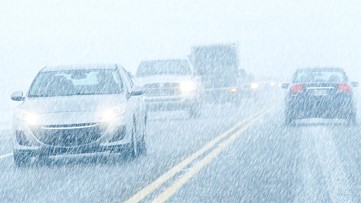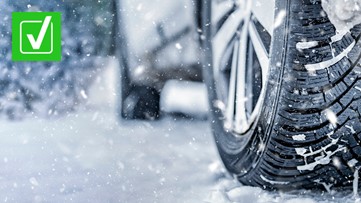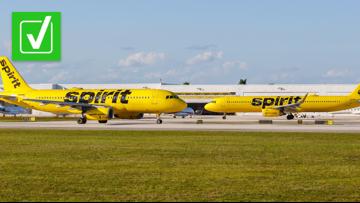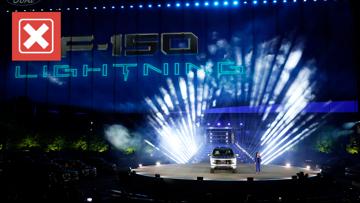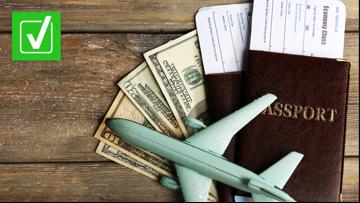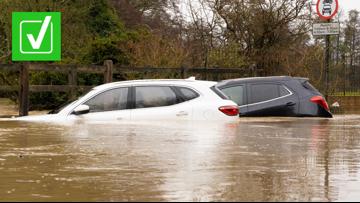Try to take a bottle of water through airport security, and it quickly ends up in the trash instead of on your plane. Same with any regular-sized toiletries you hope to take in your carry-on; they’ll only make it through in small containers.
That’s because airport security agencies around the world, such as the Transportation Security Administration (TSA) and the United Kingdom’s Department of Transport, require nearly all carry-on liquids to be stored in containers no larger than 3.4 ounces or 100 milliliters.
But a popular Instagram video claims that rule might not be around for much longer. The video claims that airports are “finally ditching” the restriction on liquids in 2024.
THE QUESTION
Are airports eliminating the 3.4-ounce container limit for carry-on liquids in 2024?
THE SOURCES
- U.S. Transportation Security Administration (TSA)
- U.S. Government Accountability Office (GAO)
- Amsterdam Airport Schiphol
- Spokesperson for the TSA
- Spokesperson for the European Commission
THE ANSWER
No, most airports have not announced any plans to eliminate the 3.4-ounce container limit for carry-on liquids in 2024. A few airports have started allowing larger-sized liquids, but they are only in Europe. TSA says it isn’t changing the rules in the United States.
WHAT WE FOUND
In an email to VERIFY, a Transportation Security Administration (TSA) spokesperson said that it is “absolutely not true” that U.S. airports would eliminate the 3.4-ounce container rule by 2024.
Airports worldwide implemented bans on large amounts of liquids after British authorities thwarted a terrorist plot in August 2006. The suspects, according to an NBC News report, planned to “use liquid explosives disguised as beverages and other common products” to blow up several passenger planes. Airport security scanners at the time had difficulty picking up the chemicals the terrorists planned to use.
The way American airport security handled liquids changed immediately. According to a U.S. Government Accountability Office (GAO) report, the TSA banned all liquids in carry-on luggage the same day the terrorist plot was unveiled. A few days later, they once again allowed certain liquids, but with a limit on the container size. Within a few months, the TSA began using its current 3-1-1 rule.
The 3-1-1 rule mandates that passengers must keep all carry-on liquids in containers of 3.4 ounces or smaller, within a single quart-sized bag that is limited to one per passenger. The TSA allows exceptions for some medications, baby food and breast milk. Today, airports worldwide have roughly the same rules for liquids in carry-on bags.
In recent years, airports around the world have started testing and implementing screening technology that can more easily scan liquids at security checkpoints.
These CT scanners, short for computed tomography scanners, can create rotatable 3D images instead of the 2D images current carry-on security scanners generate. Upon creating these images, the CT scanners use advanced algorithms to detect explosives and other threats, even in liquids, according to the TSA.
“CT technology provides enhanced detection of threat items,” the TSA says. “Like existing CT technology used for checked baggage, the machines create such a clear picture of a bag’s contents that computers can automatically detect explosives, including liquids.”
But that doesn’t mean airports around the world are changing their carry-on liquid restrictions. A few airports in Europe, however, have done so or may do so soon.
In 2021, Amsterdam Airport Schiphol announced it had become the first major airport to outfit all of its security checkpoints with fully operational CT scanners. It said it first began testing the tech in 2015, and it would allow liquids and electronics to stay in passengers’ bags.
And while that airport will allow passengers to carry some larger bottles of liquids in their carry-on luggage with the approval of the CT scanners and security staff, it still cautioned against doing so.
“Travellers are still recommended to pack liquids (and gels) in their hold baggage, and only bring bottles/containers of up to 100 ml in a resealable and transparent bag in their hand baggage,” Amsterdam Schiphol said in its news release. “Bottles/containers exceeding 100 ml are only allowed if approved by the CT scan and member of security staff. Moreover, restrictions on liquids in hand baggage still apply at most other airports, which could cause problems on a returning flight or during a transfer.”
A few other airports in the EU are also now allowing passengers to carry larger containers of liquids onto planes with them. One such airport is Milano Linate — which is one of two airports in Milan, Italy. Another airport to do away with liquid restrictions is Shannon International Airport in the Republic of Ireland, which is the fifth-busiest airport on the island.
A spokesperson for the European Commission confirmed that other European airports may choose to deploy scanners that allow them to screen larger bottles of liquid, and it is each individual airport’s decision to both use the new technology and to choose if a change in policies on carry-on liquids is warranted. But airports not equipped with the tech must continue to apply the restrictions.
Some British airports may also remove the liquid restriction. In late November, the BBC and The Times reported that the British government is considering a decision to implement these scanners, and end the liquid restrictions alongside the scanners’ implementation, in all of its major airports by the end of 2024. The two news outlets reported that an announcement is due before Christmas, but no announcement or official decision has been made as of Dec. 14.
“The good news is we have the technology. The good news is the technology works,” said Peter Greenberg, travel editor for CBS News, in an interview with VERIFY. “The question is: What's the realistic deadline for having it installed?”
In the U.S., the TSA is currently working on implementing the scanners in airports across the country. In March 2022, the TSA announced it had ordered 900 scanners to install in airports later in the year. In October, it announced a smaller version of the new scanners was in use at Harry Reid International Airport in Las Vegas, and could be utilized in compact airports with space restrictions.
But even with its increasing use of this technology, the TSA is maintaining its policy on liquids — at least for now.
“In the future, the goal is to keep laptops and 3-1-1 liquids inside of the bag during checkpoint screening,” TSA says on its CT scanner page.


